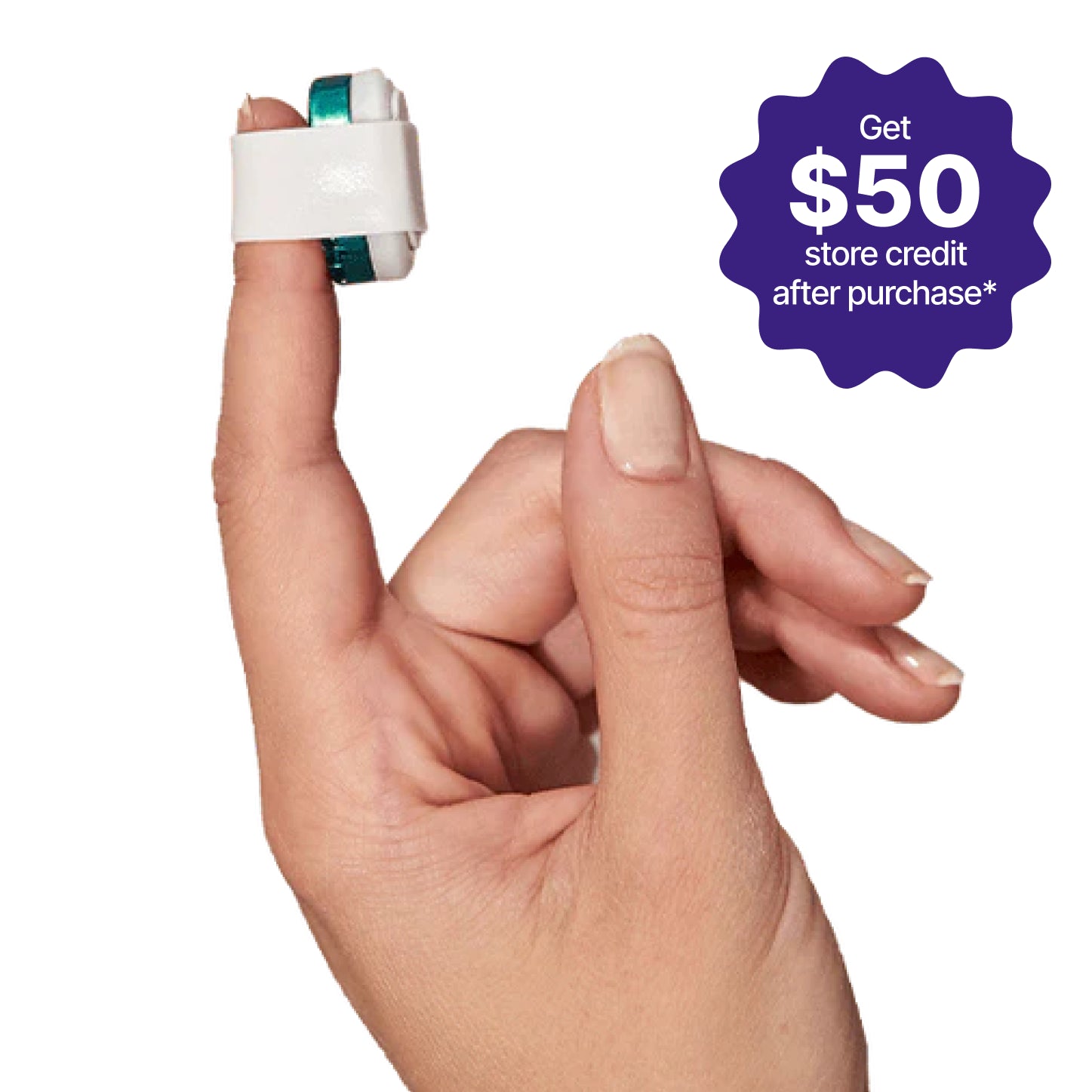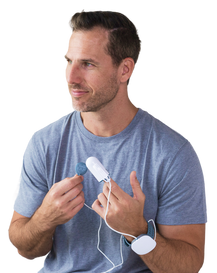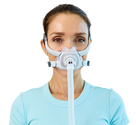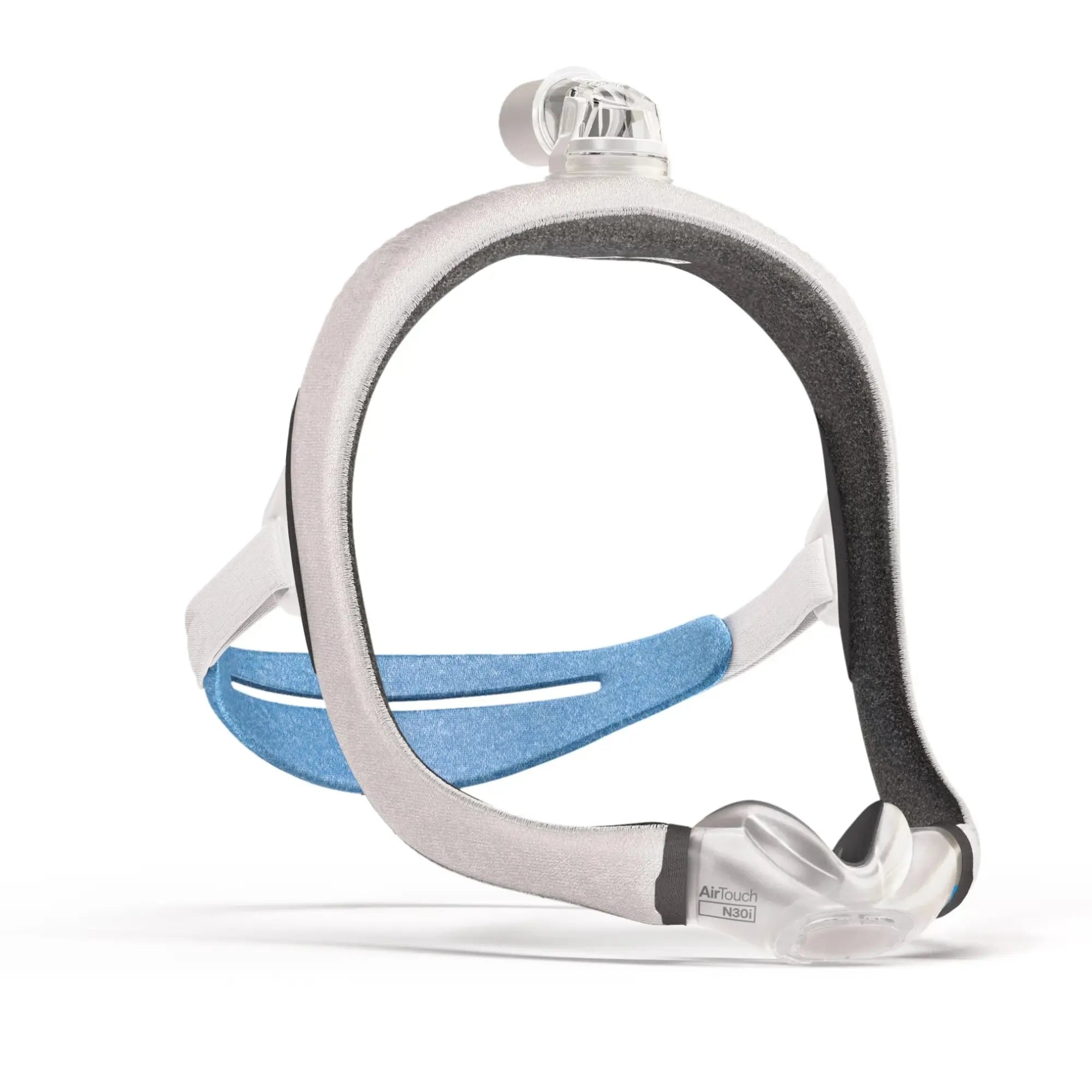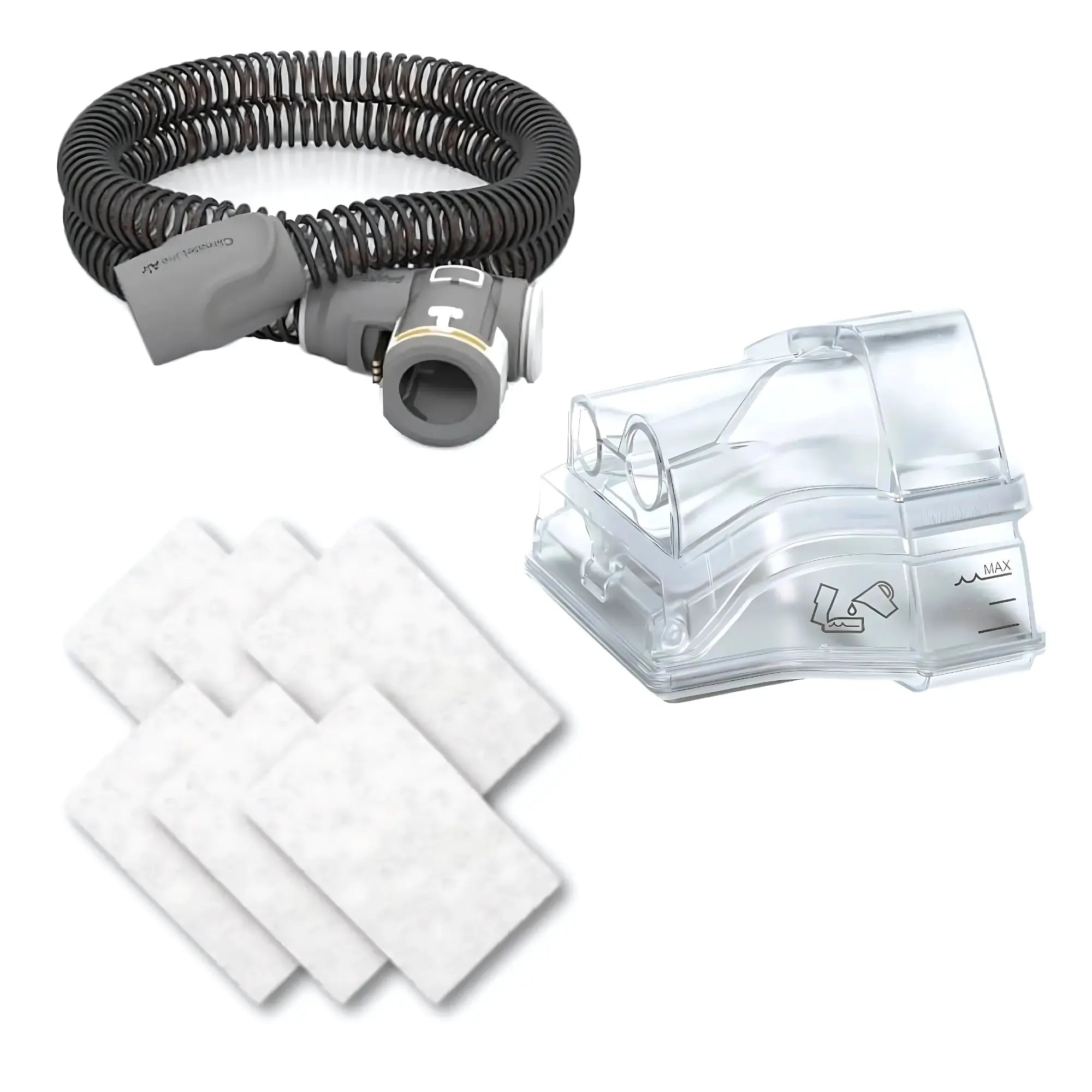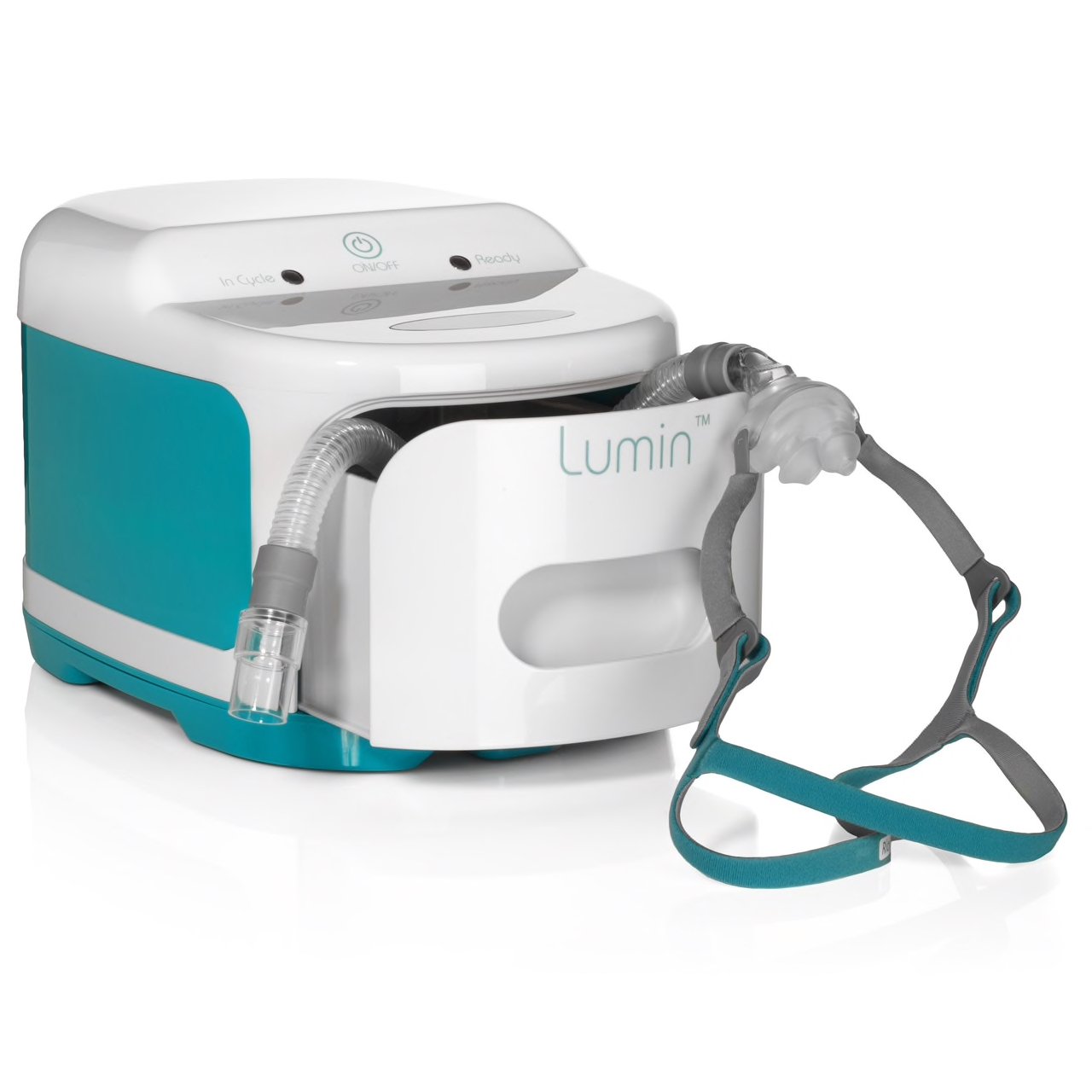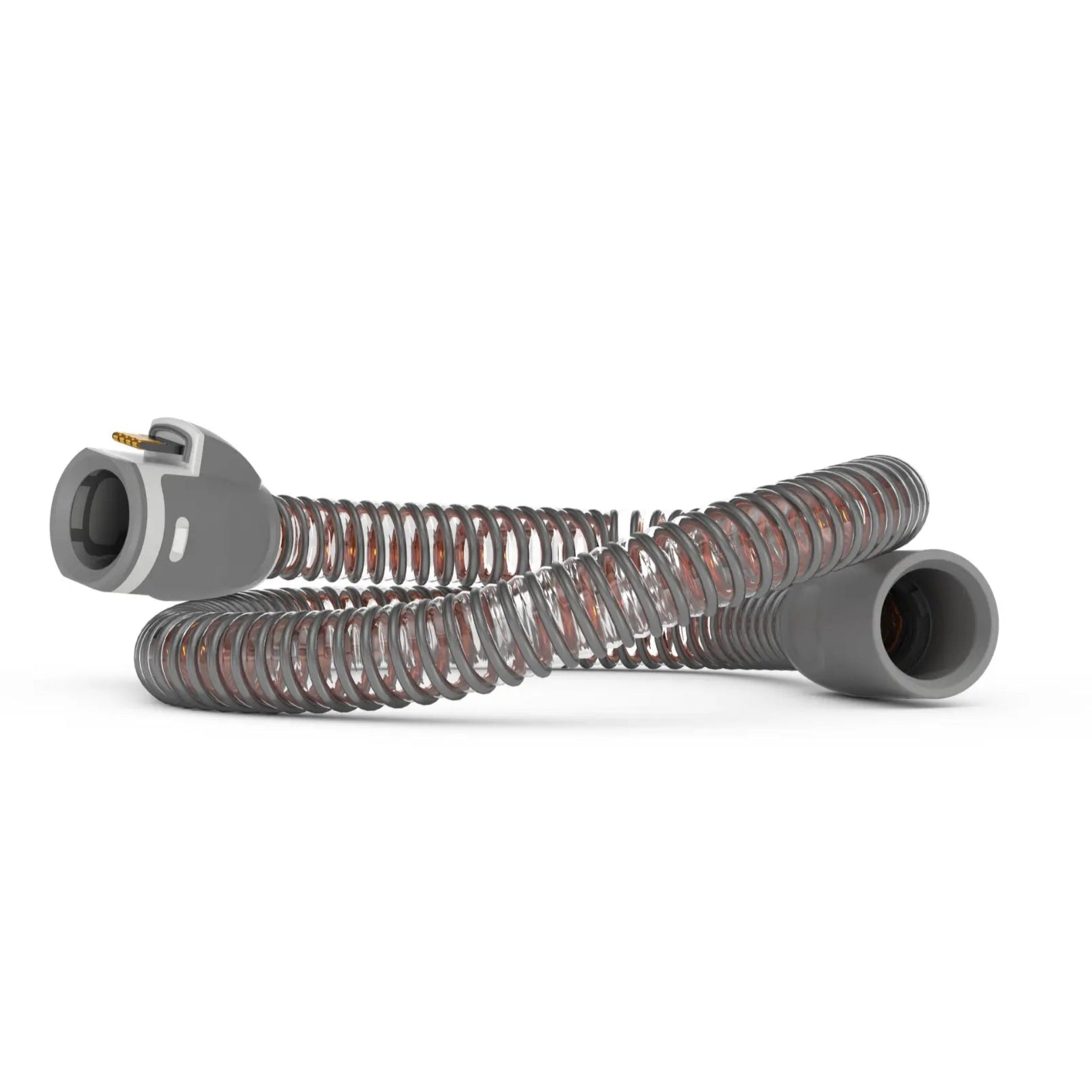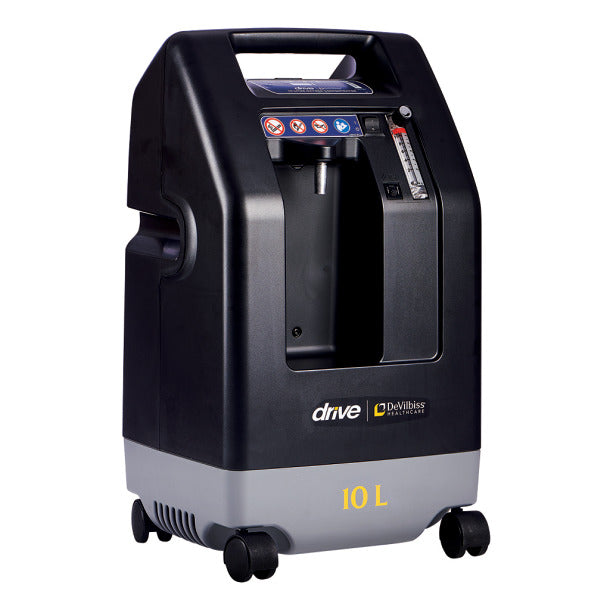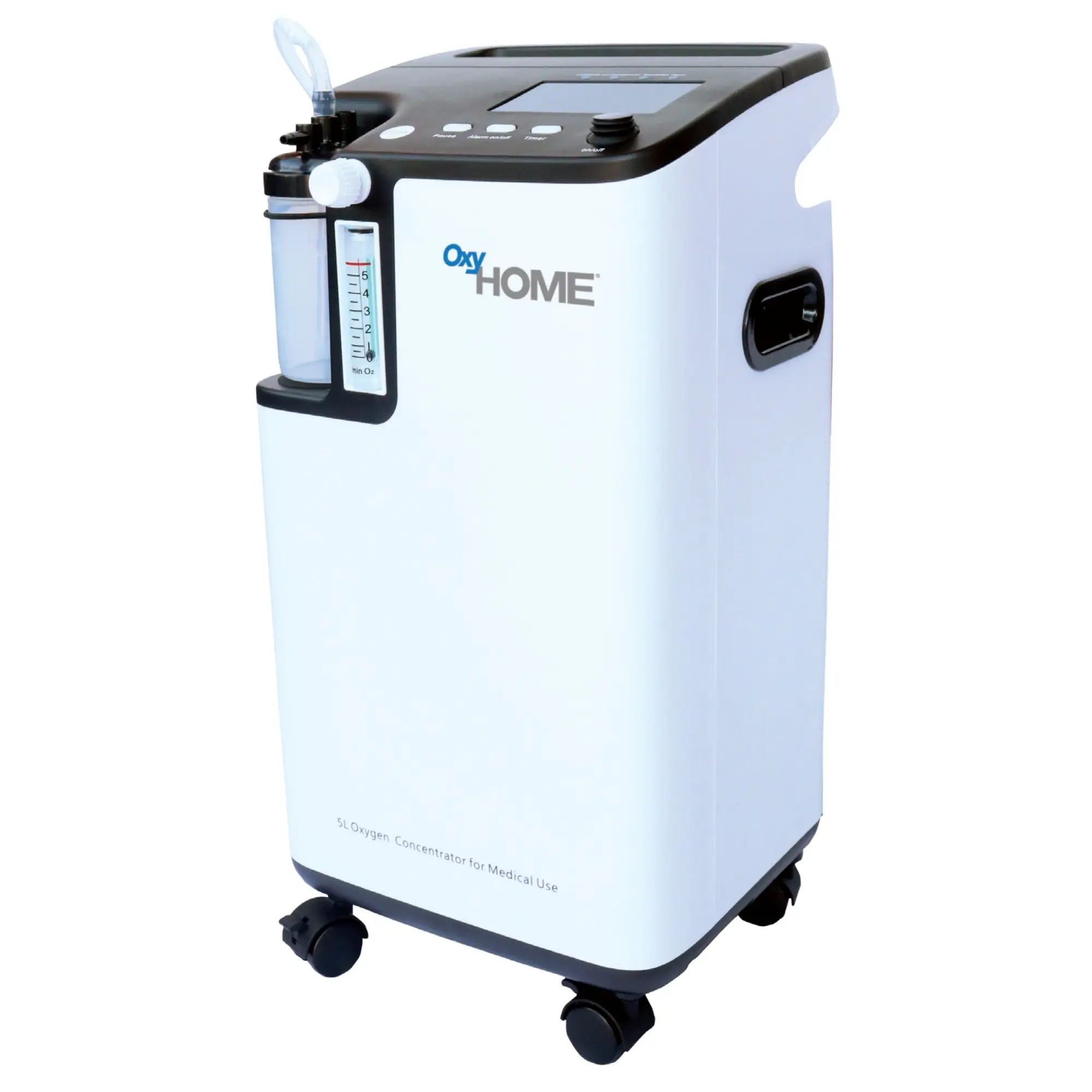When we breathe, our nose warms and humidifies the air, so the air that goes through our airways is moist and warm. In some cases, this function is not properly achieved, as in people living with sleep apnea, who require Continuous Positive Airway Pressure (CPAP) therapy.
CPAP users can also experience side effects due to the dryness of the air passing through the device, such as irritation of the throat and nasal passages, nosebleeds, dry mouth and nasal congestion.
A solution to this inconvenience is using a CPAP humidifier, a device that moisturizes the air from the CPAP to your airway and increases your comfort level during CPAP therapy.
Keep reading to learn what a CPAP humidifier is, how to use it, and how to take care of it properly.
How Do CPAP Humidifiers Work?
CPAP Humidifiers are containers filled with distilled water that can be attached to a CPAP machine as an external device or built-in as part of the machine.
The primary purpose of CPAP humidifiers is to moisturize the air that goes through the CPAP tubing and into the upper airway, making CPAP therapy more comfortable by replacing the upper airway moisture that can be lost during CPAP therapy.
The humidification can be produced in three ways: Heated humidifiers warm the water within the container, and the resulting water vapor provides moisture to the air.
Some of these humidifiers have a heated tube that prevents condensation buildup in the tubes or the face mask, thus preventing rainout (moisture accumulation in the face).
On the other hand, passive humidifiers make the air pass through the water's surface, thus moisturizing it without creating heat. Most CPAP humidifiers allow you to customize the temperature and the humidity level of the air you breathe.
Opt for a waterless humidifier if you're looking for travel CPAP machines. These humidifiers capture heat and moisture from your breath when you exhale, rather than using water. Waterless humidification systems are ideal for travel because they reduce bulk and remove the hassle of carrying distilled water.
Should I Use The Humidifier With My CPAP?
You can use your machine without a humidifier, which is not essential for effective therapy. However, some patients are uncomfortable using a CPAP device if the airflow is too cold, and they could get some side effects from having dry air flowing through the nose, throat and sinus.
The most relevant side effects of sleeping with a constant dry airflow are nasal congestion, sinus inflammation, nosebleeds and sore throat.
CPAP humidifiers are excellent options if you are having trouble sleeping because of the dry air of your current device. They are also a good for anyone who sleeps in a cool, dry environment as an effective comfort option.
The moisturized air created by the CPAP humidifier can upgrade sleep apnea therapy by keeping the upper airway hydrated. This means it can:
- • Reduce the dryness that can affect the nasal passages and sinuses
- • Prevent nasal and sinus congestion and inflammation
- • Avoid nosebleeds
- • Alleviate sore throat
- • Reduce the symptoms of seasonal allergy
Types of CPAP Humidifier
Built-in humidifiers
Most modern CPAP machines have built-in humidifiers, which can be easier to use and maintain. These are permanently fixed to the CPAP machine so the only piece that can be removed is the humidifier water chamber for cleaning purposes.
CPAP devices with built-in humidifiers take up less space than those with a stand-alone humidifier since they do not require additional power sources or setups. This makes them ideal for a travel CPAP machine.
Check our collection of CPAP machines for references of the best quality built-in humidifiers.
Integrated humidifiers
Stand-alone humidifiers
How To Adjust CPAP Humidifier Settings
Most CPAP humidifiers have different settings that can be adapted to each user’s sleep apnea treatment plan or preferences. The main CPAP humidifier settings that can be adjusted are the humidity level, the temperature of the tubing, and the water.
Adjusting these settings depends on the type of humidifier you have and your doctor's recommendations. The main things you should consider when adjusting your CPAP humidifier’s settings are:
The manufacturer's suggestions
Your sleep environment
Manual or automatic settings
CPAP users can choose between personalizing the temperature and humidity in the manual settings or choosing the automatic settings so that the humidifier makes automatic adjustments to maintain proper temperature and humidity throughout the night.
Keep in mind that finding the ideal settings for you might require some trial and error. A good way to make this process easier is to keep a record of the chosen settings and how you feel using them.
How To Clean a CPAP Humidifier
CPAP manufacturers recommend periodic cleaning of all parts of your device to avoid the build-up of dust or harmful microorganisms. This includes some daily cleaning routine, as well as washing the CPAP hose, mask, tubing and chamber of the CPAP humidifier at least once a week.
The daily cleaning routine consists of emptying the water chamber and refilling it with distilled water. This prevents the spread of bacteria, fungus and other pathogens.
To properly clean a CPAP humidifier, follow these simple steps once or twice a week:
- 1. Discard any remaining water from your CPAP’s water chamber.
- 2. Fill the chamber with warm water and a mild soap or white vinegar (using one part of vinegar for five parts of water). Take a look at the best cleaning soaps for your CPAP.
- 3. Let the chamber soak for 30 minutes.
- 4. Rinse the remaining soap or vinegar with plain water and let it air dry away from direct sunlight.
- 5. Once it is fully dry, fill the chamber with distilled water. Avoid tap water, which might lead to mineral build-up in the chamber.
These steps also work for cleaning your CPAP hose and mask. Soak these pieces together in warm soapy water during the process.
Note that some water chambers are dishwasher safe, so that can be a good option too. However, it is advisable to let the chamber soak before using the dishwasher. Another good option would be to use a CPAP cleaning machine to automate this task.
How To Take Care of a CPAP Humidifier
Taking proper care of a CPAP Humidifier not only prevents the build-up of microorganisms but also allows optimal functioning and lengthens the useful life of the device.
There are several steps to care for CPAP machines with humidifiers:
- • When cleaning the CPAP supplies, avoid using soaps or cleansers that contain harsh chemicals, like bleach, alcohol, scented oils or moisturizers. These products can damage your machine parts and reduce their lifespan.Most manufacturers recommend filling the chamber only with distilled water to prevent mineral build-ups that could corrode the chamber.
- • Avoid letting your device receive direct sunlight.
-
• Change the water in the chamber daily, discarding any remaining water.
- • Replace the humidifier filter according to the manufacturer’s recommendations. A worn-out or dirty filter could affect both the functioning of the humidifier and the health of the user.
- • Avoid transporting your device with water in the humidifier chamber.
- • Make a periodic and careful inspection of the machine and all its accessories, looking for cracks or tears. In case you find any, replace the damaged parts as soon as possible for optimal functioning.
Each humidifier might have its own particular requirements. Because of this, it is important to check the manufacturer's instructions in order to improve your CPAP therapy experience, guarantee the effectiveness of your CPAP humidifier and make it last as long as possible.
When Should You Replace Your CPAP Humidifier?
The lifespan of a CPAP humidifier depends on its maintenance routine as well as on the frequency of use. Each manufacturer usually gives their own recommendations as to when a CPAP humidifier should be replaced, but there are some simple pieces of advice that can help you realize when you should look for a new humidifier.
A sign that your humidifier is not producing enough moisture is a dry nose or respiratory tract irritation. Also, if you see the water chamber leaking or cracked, or if you see filter clogs and discoloration, it is definitely time to replace these parts.
The average time for replacing the water chamber is around once or twice a year. If you clean it as described above, it should last from six to twelve months.
As for the filter, the replacement time depends on whether it is a disposable filter o a reusable filter. Reusable filters should be replaced at least twice a year, whilst disposable filters must be changed every two to four weeks.
For additional guidance, please check our CPAP replacement recommendation schedule.
Before purchasing a replacement, consult your sleep specialist to make sure you are using the right equipment and settings for your sleep apnea treatment.
At Sleeplay we have consultants who can offer personalized guidance to help you find the best option from the most recognized brands in the industry such as ResMed, Philips Respironics, Fisher & Paykel and more.
Examples of Integrated Humidifiers
HumidX Plus
The Resmed HumidX Plus is a disposable waterless humidifier that is compatible with AirMini™ CPAP machines. It is designed for dry environments, as it captures heat and moisture from the user’s exhalation, and stores it within the HME’s tiny paper ridges. When you inhale, this heat and moisture is released to humidify the air you breathe in.
The difference between HumidX Standard and HumidX Plus is that the first can be used in any climate, whereas the latter is specifically designed to best fit dry climates.
HumidX Plus can be inserted directly between the mask connector and the vent, providing effective waterless humidification at a compact, effective and comfortable level. It must be replaced within 30 days of opening (3 or 6 pack).
DreamStation Heated Humidifier For Therapy
The DreamStation Heated Humidifier is compatible with Philips Respironics DreamStation Series machines. It provides optimum comfort by adding moisture to the therapy air. It allows for a heated tube to be added to maintain the warmth of the therapy air as it travels through the hose to the mask.
3B Medical Luna G3 Water Chamber
The 3B Humidifier Water Chamber integrates with Luna G3 Series CPAP Machines. It is easy to clean and refill, ensuring a hassle-free experience. The chamber's unique design delivers consistent humidity levels throughout the night, reducing dryness and irritation commonly associated with CPAP therapy, thus providing a comfortable and restful night's sleep.
Luna II - Water Chamber
The Luna II replacement humidifier water chamber is compatible with the Luna II CPAP Machine. It is designed to be accessible and easy to use with a front cap to easily fill up and a label with a Max fill-up line. It should be replaced every six months to ensure its safety and efficacy.
FAQs
Why is My CPAP Humidifier Using So Much Water?
The humidity and temperature of your room can affect the amount of water your CPAP machine uses. The machine may use more water in a dry or cold environment to maintain the necessary humidity.
It can also be affected by the temperature settings you choose. The higher the temperature you want your CPAP to work with, the more water the humidifier will need.
Can I Use my CPAP Humidifier Without Water?
CPAP machines can be used without a humidifier or water chamber. The machine will continue to disperse dry air into your mask, even if it is a built-in humidifier or an integrated humidifier. Simply go to the setting and choose the option without humidification.
On the other hand, there are some humidifiers that provide moisture without using water, such as the HumidX.
Does the CPAP Humidifier Need Distilled Water?
Tap water and bottled water contain minerals (like calcium and iron) that could build up and damage your CPAP humidifier and other parts. They can also have germs, like bacteria and fungus that could contaminate your machine.
Distilled water, on the other hand, is the purest form of water that exists. It lacks minerals and germs, which means it will not lead to limescale and is inexpensive. Distilled water is the preferred type of water to use in your humidifier. You can use tap or bottled water, but it will shorten the lifespan of your device.
What is The Best Humidity Level for CPAP?
The recommended humidity level may vary from one CPAP user to the next. As a general rule, you can set your CPAP machine to one measure below half of your maximum humidity range. For example, if your maximum humidity range is 8, then you want to start on 3. From this point, you can adjust up or down a measure or half a measure at a time until you find what works best for you.
Keep in mind that the temperature and humidity of the environment can change throughout the seasons, so you might need to adjust the settings as the weather changes.
What Are the Symptoms of Too Much Humidity in CPAP?
How Much Do CPAP Humidifiers Cost?
Stand-alone humidifiers typically cost around $150 to $250. However, most CPAP machines now have a built-in humidifier that only requires changing its filter and water chamber.
The chamber can be used from six months to a whole year, depending on how careful you are with it and how often you use it. They cost around $20 to $40.
Are CPAP Humidifiers Covered by Insurance?
Most private insurers cover CPAP humidifiers when they are determined to be medically necessary. To be certain, consult with your insurance provider.
Sleeplay can help you get the best CPAP humidifiers for your treatment. Check out our collection of CPAP machines and humidifiers and explore the best options for you.



